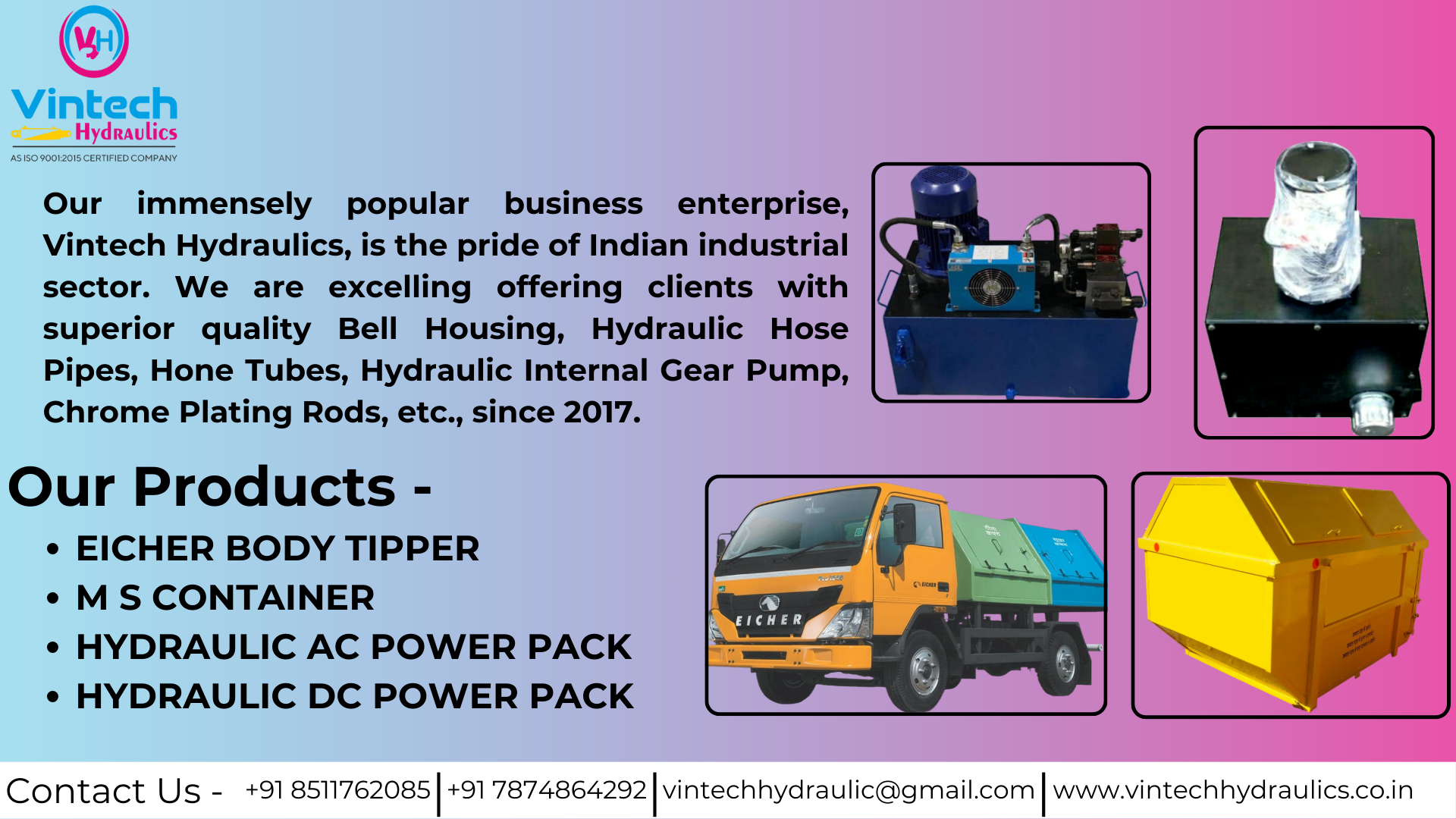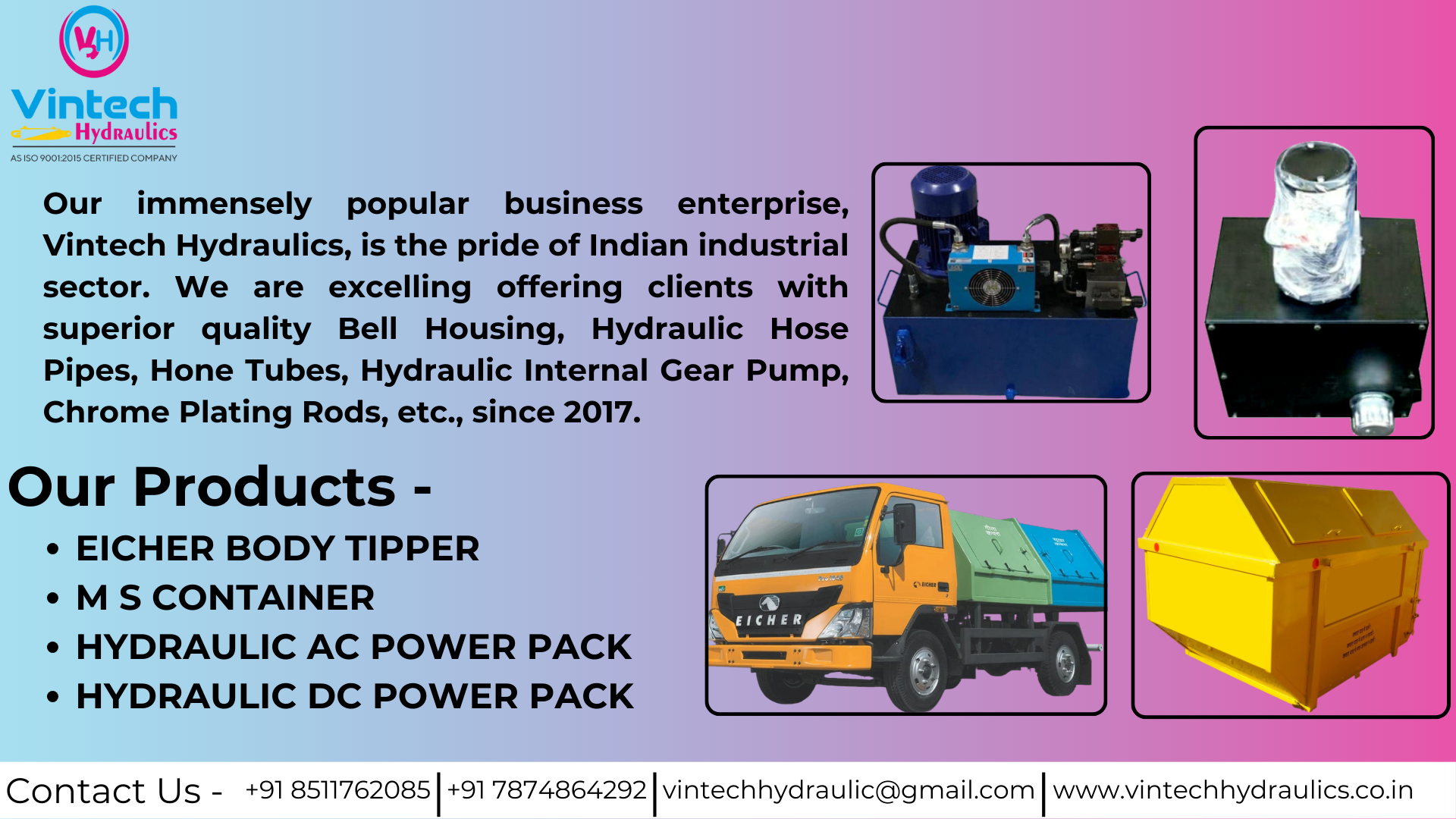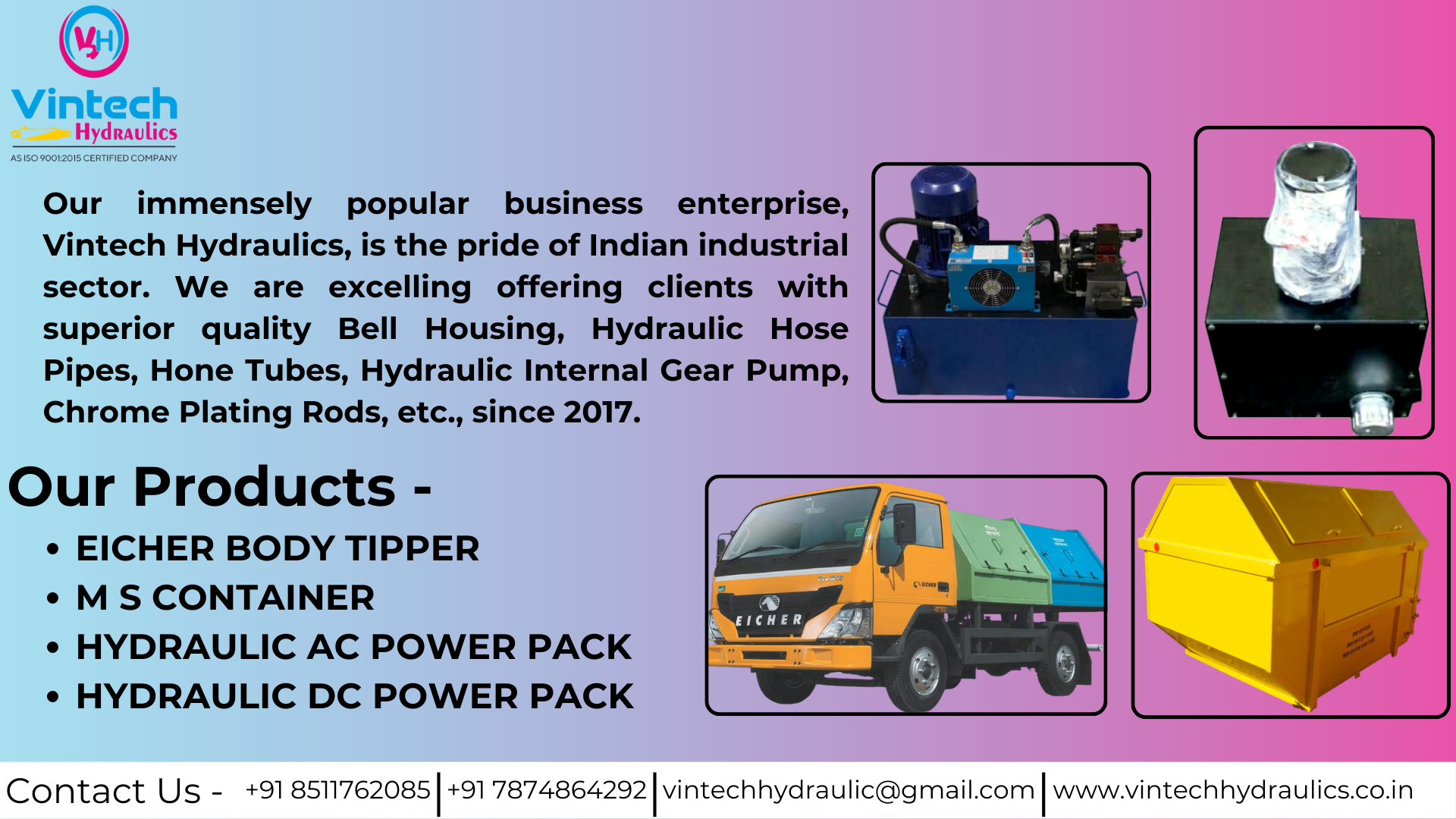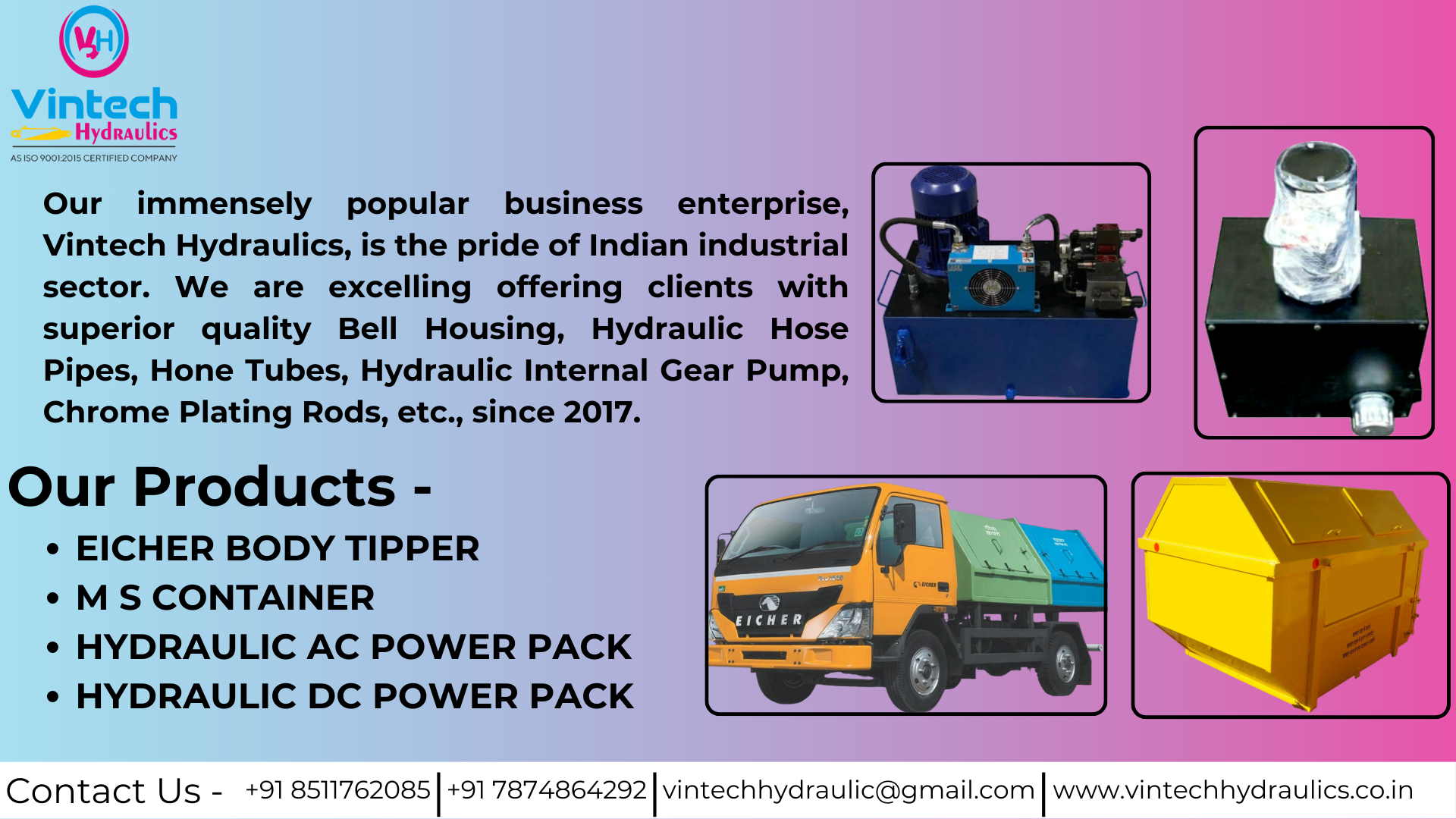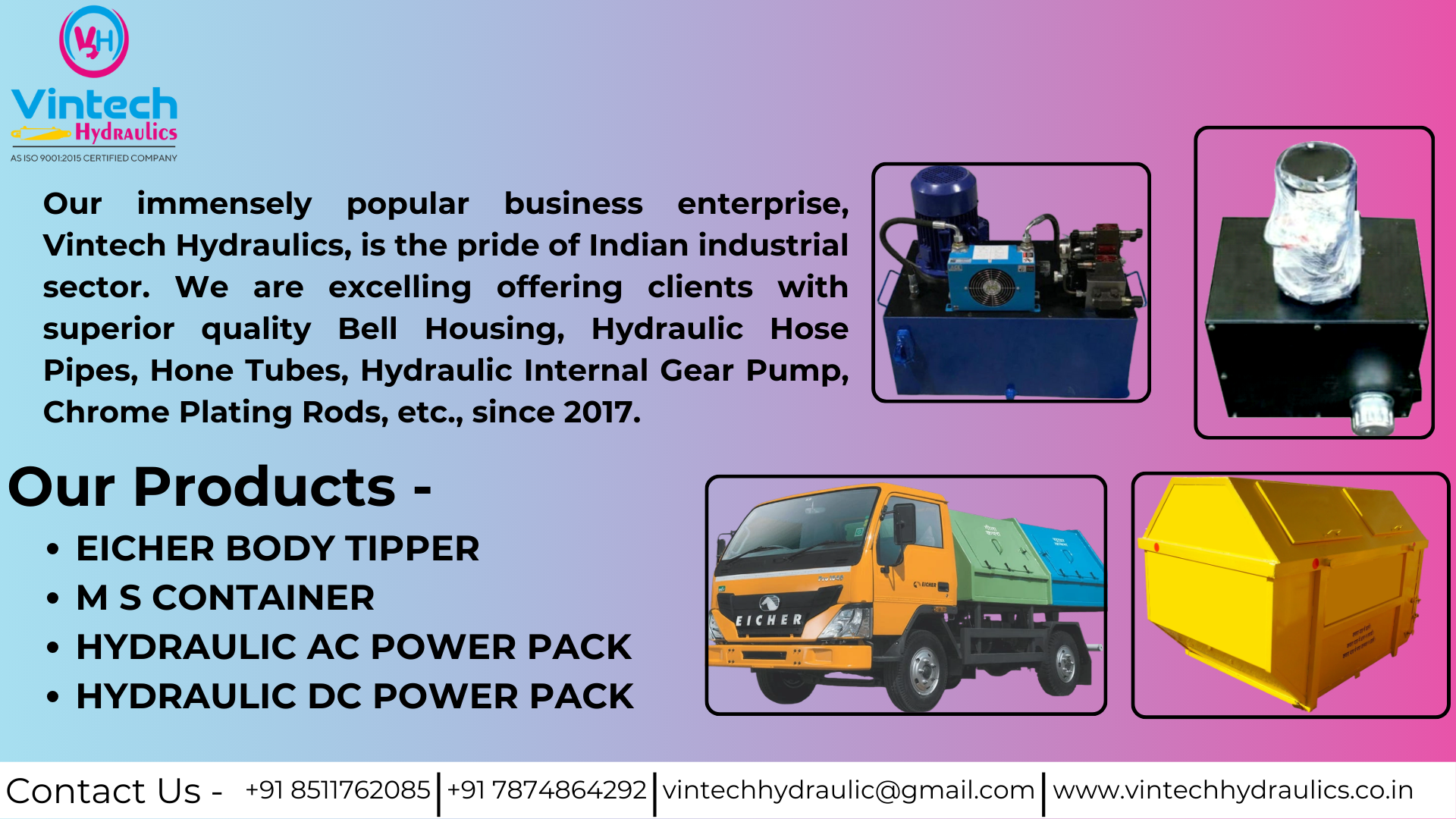
Hydraulic power pack working principle
Hydraulic Power Pack – Working Principle
A hydraulic power pack, also known as a hydraulic power unit, is a self-contained system that provides the necessary force and flow to operate hydraulic machinery. It is the heart of any hydraulic system, converting mechanical energy from an electric motor or engine into fluid energy. Power packs are widely used across Indian industries, including construction, manufacturing, agriculture, and material handling, due to their compact size, high power density, and precise control capabilities. Their robust design makes them ideal for a range of demanding applications. To learn more about customized power pack solutions, visit Vintech Hydraulics.
The working principle of a hydraulic power pack is based on Pascal's law. An electric motor or engine drives a hydraulic pump, which draws hydraulic fluid from the reservoir. This fluid is then pressurized and pushed through a system of filters, valves, and pipes. The high-pressure fluid travels to hydraulic actuators (like cylinders or motors) to perform work, such as lifting, pressing, or rotating. Once the work is done, the fluid is returned to the reservoir, where it cools down and is filtered before being used again. The entire process is controlled by directional control valves, pressure relief valves, and flow control valves to ensure safe, precise, and efficient operation. Find the right power pack for your needs at Vintech Hydraulics.
- AC Hydraulic Power Packs: These units are powered by an AC motor, suitable for high-power, heavy-duty applications in industrial settings, presses, and large machinery.
- DC Hydraulic Power Packs: Designed for mobile and portable applications, these units run on a DC motor and are commonly found in tailgates, forklifts, scissor lifts, and agricultural equipment.
- Micro Hydraulic Power Packs: Extremely compact and lightweight units, ideal for small-scale operations, automation systems, and applications where space is a critical constraint.
- Single-Acting Power Packs: These units apply force in only one direction (e.g., lift), with gravity or an external force used for the return stroke. Simple and cost-effective for basic lifting tasks.
- Double-Acting Power Packs: Provide hydraulic pressure for both extension and retraction, offering more control for applications like presses and clamping systems.
- Reservoir: A tank that holds the hydraulic fluid, ensuring a clean and consistent supply for the pump and cooling the fluid after use.
- Pump: The heart of the power pack, responsible for converting mechanical energy into hydraulic energy. Common types include gear, vane, and piston pumps.
- Motor: An electric motor (AC or DC) or an internal combustion engine that powers the hydraulic pump.
- Valves: A control system including pressure relief valves for safety, directional control valves for fluid path, and flow control valves for speed regulation.
- Filters: Critical components that remove contaminants from the hydraulic fluid, protecting the system from damage and extending its service life.
- Industrial Machinery: Used to power presses, bending machines, injection molding equipment, and other heavy-duty machinery, ensuring consistent force and precision for manufacturing operations.
- Lifting and Material Handling: Integral to forklifts, scissor lifts, dock levelers, and cranes, where they provide the controlled power required for lifting heavy loads safely and efficiently in warehouses and logistics hubs.
- Construction Equipment: Deployed in mobile cranes, excavators, and dump trucks to provide the immense power needed for lifting, digging, and tilting operations on construction sites and in mining.
- Agricultural Machinery: Employed in tractors, harvesters, and loaders for functions such as lifting implements, steering, and controlling various attachments, improving field productivity and versatility.
- High Power Density: Delivers immense force and torque from a compact and small-footprint unit, making them ideal for space-constrained applications.
- Versatility and Customization: Can be easily configured with different pumps, motors, valves, and reservoirs to meet specific pressure, flow, and application requirements, from simple to complex.
- Reliability and Durability: Constructed with robust materials and components, hydraulic power packs are designed for long-term, continuous operation in harsh industrial and outdoor environments.
- Precise Control: Offers exceptional control over force, speed, and motion, which is crucial for applications that require high accuracy and repeatability, such as in CNC machines and presses.
India's hydraulic industry is home to a wide range of manufacturers and suppliers specializing in hydraulic power packs. These companies provide standard and custom-built units for various industries, including agriculture, construction, manufacturing, and mobile equipment. Leading suppliers offer comprehensive services, from initial design and consultation to manufacturing, testing, and after-sales support. Strong local production ensures quick turnaround times for custom projects and easy availability of spares, critical for minimizing downtime in India's fast-paced industrial landscape.
Maintenance and Safety Tips for Hydraulic Power Packs
- Regularly check the hydraulic fluid level and top it up to the correct mark to prevent cavitation and pump damage.
- Inspect filters frequently and replace them as per the manufacturer's recommendations to ensure fluid cleanliness.
- Periodically check for any leaks around fittings, hoses, and seals; a minor leak can indicate a more significant problem.
- Listen for unusual noises from the pump or motor, which could signal air in the system or worn components.
- Always de-energize and lock out the system before performing any maintenance or inspection.
FAQs – Hydraulic Power Packs
Contact Details
Talk to our specialists today for tailored solutions and fast assistance.

